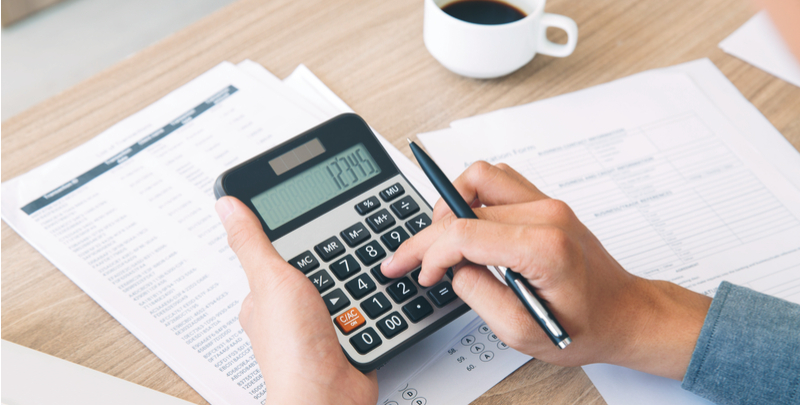How to save with Wise while studying abroad
Stretch your dollars when studying abroad, use Wise.

If just the acronyms HECS-HELP start to make your head throb with pain, you aren’t alone.
The Higher Education Contribution Scheme (HECS) was what the interest-free Australian government loans used to be called, but are now more commonly known as the Higher Education Loan Programme (HELP) or as HECS-HELP loans.
If you’re one of the recipients, there are a number of things you’ll need to be aware of as, starting July 1, 2017, the Australian government made several changes to the repayment of these HECS-HELP debts for Australians living overseas.
This guide should assist you in navigating these confusing and tricky waters. And help you understand exactly how you need to handle any outstanding debt you may have left.

In Australia, many students use these interest-free government HECS-HELP loan schemes to pay for university. To qualify, students need to be eligible for a Commonwealth supported place (CSP).
A CSP is available to Australian citizens, some New Zealanders, and those with permanent visas. At the moment, permanent residents still aren’t eligible for a Commonwealth supported place.
As a part of subsidised higher education, all public universities and some private institutions offer CSPs. The Australian Government pays part of the fees for the student’s place directly to the university. While students don’t personally have to pay the subsidy amount back, they are required to pay the remainder of the fee - known as the 'student contribution amount' - for each unit they are enrolled in.

The regulations have changed a bit recently if you’re living abroad. As of July 1, 2017, if you live overseas you’ll now have the same repayment obligations as people who live in Australia. The new restrictions aren’t just focused on HECS-HELP loans, either. It encompasses all other training and study loans.
Each year, by October 31, you’ll need to work out your income and report it to the Australian Tax Office (ATO). More on thresholds and where to pay later.
On your own you can make voluntary repayments on what’s left, but these still won’t replace compulsory ones.
Your debt will continue to be indexed every year until the entire debt is repaid. And compulsory payments will still be, well, compulsory - regardless of what extra money you throw at the balance.
The short answer? Nope.
If making your repayment would either cause you serious hardships or there are any other special reasons you’d need to travel such as death or serious illness in the family, you can apply to defer your compulsory repayment or overseas levy. But only defer.
Otherwise, you’ll be hit with some fairly stiff penalties upon your return to Australia. You don’t want to risk that.

The good news if you’re struggling to get on your feet is that you may be able to defer paying back your loan for a while. Repaying your HECS-HELP debt only commences once your taxable income reaches AU$54,869.
| Repayment Income (RI*) | Repayment Rate |
|---|---|
| Below $55,874 | Nil |
| $55,874 – $62,238 | 4.0% |
| $62,239 – $68,602 | 4.5% |
| $68,603 – $72,207 | 5.0% |
| $72,208 – $77,618 | 5.5% |
| $77,619 – $84,062 | 6.0% |
| $84,063 – $88,486 | 6.5% |
| $88,487 – $97,377 | 7.0% |
| $97,378 – $103,765 | 7.5% |
| $103,766 and above | 8.0% |
In the May 2017 Federal Budget, the Australian Government announced they would be lowering the repayment threshold starting in the 2018 – 2019 tax year. The threshold would be lowered to AU$42,000 with a 1% repayment rate and a maximum threshold of $119,882 with a 10% repayment rate.

Before you move away from Australia or spend an extended time abroad, there are a few things you’ll need to take care of.
Firstly, if you don’t already have a myGov account, you’ll need to create one. There you’ll be able to link all your Australian government services such as Centrelink, Medicare and My Health Record, and the Australian Tax Office (ATO) to make things a bit easier.
Then, using your myGov account, notify the ATO that you’re heading abroad. Sadly, this can’t wait until later. You’ll need to get it done prior to leaving, or within 7 days, of any trip where you’ll be out of the country for 183 days or more. Your tax can also be lodged through the ATO on the myGov website.
If you already live overseas and have a HECS-HELP debt and haven’t followed the above steps, you’ll want to contact the ATO immediately.

When you’re calculating your foreign income, deductions and foreign tax you’ve paid, all figures must be denoted in Australian dollars. To figure out what that exchange rate is, the ATO has a guide on their site to help you find the right number.

If your yearly income is under the equivalent of AUD$13,717 then simply submit a non-lodgement form on myGov.
For anything above that, you can either engage an Australian tax agent, or lodge your form via myTax or the myGov site. If your worldwide income is above AUD$13,717 but below AUD$54,869, no overseas levy will be raised because you’ll be below the minimum repayment level.

Even if you’ve been overseas for years and never had to pay the debt previously, starting July you do now.

The sad truth is when you pay your debt back from abroad, you’ll be out much more from your pocket than you realize.
To plan for this, it’s best to know upfront the extra costs you’ll face.
To give you an idea, read on for each type of repayment and what additional fees you’ll come up against.

If you transfer money online, you’ll be hit with online money transfer charges. International bank transfers aren’t cheap, after all. Not only that, but most banks don’t inform you upfront of the fees that the other banks involved will levy. It’ll be entirely up to you or your beneficiary to gather that information.
You’ll be hit with flats charges by:
Not only do you have to think about the fixed fees added by the 3-5 banks involved, but there will also be a few other things to keep in mind if you aren’t sending Australian dollars from abroad.
In this case, one of the banks will convert your money at an exchange rate they pick. On their own terms. Historically this rate, typically 2-5% higher than the global mid-market rate, is quite unfavourable and where the bulk of the extra expense often originates. In fact, those that take the time to do the math later find the rate on Google shockingly quite different than the rate the bank used use when converting from one currency to another. Not a pleasant surprise.
Before you send off your money, make sure to check, double-check, and re-check all of your recipient bank details. SWIFT payments are notorious for getting stuck, delayed or sometimes completely lost if the tiniest detail is off. So if you’ll need to trace, cancel or amend a transfer, expect it to be a costly hassle.

Believe it or not, despite the fact that they’re quite common, credit and debit cards are expensive for merchants to operate. Which means when it comes time to paying online for your HECS-HELP debt, you’ll be charged for the privilege to do so. Unfortunately, it’s hard to know upfront what these fees will be as it will depend on the card issuer, the card merchant, the country the card originated, and your individual terms of use.
There are two main fees you can watch out for.
It will depend on your exact credit/debit card provider what you’ll be charged, but be prepared for fees of anywhere from 0.5% to up to 5% of the total amount. If you’ve got a debit card, it’s normally cheaper than credit cards.
Even if your debit card abroad is already in Australian dollars, there’s still a possibility there may be currency conversion involved. And if it’s not from an AU$ bank account, then there’s definitely currency conversion involved.
Merchants and banks normally hit you with an exchange rate mark-up of anywhere from 2-4%. Though this may seem like another boring financial term there’s no point in knowing, you’ll want to educate yourself on this topic because it can cost you a lot to not know what it is.
The mid-market rate, also known as the interbank rate or spot rate, is the mid-point between the buy and the sell rates on the global currency market. It’s the same rate as you’ll find on Google and the most accurate assessment of the value of your money. The rate itself isn’t so simple to pin down - it changes constantly as currencies are traded worldwide. However, though it may be constantly fluctuating, banks and brokers habitually apply a “spread” to the rate, which is effectively a hidden charge that amends the quoted rate and puts the difference in their pocket.
This little extra is never quoted in the transfer fee, and banks don’t want it publicised.
All in all, that means if you’ve been keeping track of all of these fees, you can be charged an extra 2.5-9% just for the privilege of using your card to pay your loans from abroad. That’s quite a bit.

As explained previously, one of the sneakiest ways you’ll end up losing money is when banks and other merchants give you an unfavourable exchange rate. Wise changes all that.
With Wise, you can make a bank transfer to the ATO from overseas as long as you make sure to include your ATO payment reference when you create the transfer, but without the hefty international transfer fees. And at the real exchange rate - the same one you can easily find on Google or XE.
Wise has bank accounts in countries all across the world, so when you make your bank transfer, it will be a local one. Which means those international SWIFT fees you’re charged with a normal international bank transfer will be entirely eliminated. Once Wise receives your money in a local bank account, they will transfer the equivalent in Australian dollars - at the real rate - to the ATO on your behalf. You won’t have to worry about hidden or extra fees, either, as Wise will tell you upfront the entire fee you’ll be charged so you can make sure you’re getting the best deal before you commit.
What you see is what you get. Give it a try to pay off your HECS-HELP debt. The more you save then the faster you’ll be able to get the remainder of your balance eliminated. And who wouldn’t want that?

Best of luck, and happy repayment!
*Please see terms of use and product availability for your region or visit Wise fees and pricing for the most up to date pricing and fee information.
This publication is provided for general information purposes and does not constitute legal, tax or other professional advice from Wise Payments Limited or its subsidiaries and its affiliates, and it is not intended as a substitute for obtaining advice from a financial advisor or any other professional.
We make no representations, warranties or guarantees, whether expressed or implied, that the content in the publication is accurate, complete or up to date.

Stretch your dollars when studying abroad, use Wise.

Get ready to study abroad with our guide.

Understanding the best study abroad scholarship opportunities for US citizens.

Studying abroad is a big financial investment for students. Research carried out by Wise, the global technology company building the best way to move money...

Here’s all you need to know about the best credit cards for international students. We cover some of the best options and advice out there.

Everything yo need to know about the costs of studying abroad as an American.